 |
| Date & Time: | Dec 15 2018, 24:04 JST(+0900), 1min. exposed |
| Optical: | Meade 25cm(10") Schmidt Cassegrain with a conversion lens(f=1250mm, F5.0) |
| Auto-guided with Meade LX200 Equatorial & Pictor 201 XT | |
| Cooled CCD Camera: | SBIG ST-402ME (Cooling Temp.: -25°C) |
| Location: | Ooizumi, Hokuto city, Yamanashi pref. |

| Date & Time: | Dec 15 2018, from 24:01 to 24:04 JST(+0900), 3min. exposed |
| Optical: | Meade 25cm(10") Schmidt Cassegrain (f=2500mm, F10.0) |
| with SBIG DSS7 spectrometer (slit width: 0.05mm) | |
| Auto-guided with Meade LX200 Equatorial & Pictor 201 XT | |
| Cooled CCD Camera: | SBIG ST-402ME (Cooling Temp.: -25°C) |
| Location: | Ooizumi, Hokuto city, Yamanashi pref. |
C2H2 ⇒ C2H + H ⇒ C2 + H + HMoreover, the spectrogram shows you lines of the cyan (CN), the radical of ammonia (NH2), and so on.
 46P Wirtanen on Dec 29, 2018 |
 46P Wirtanen on Dec 14 & 15, 2018 |
 |
 |
Copyright(c) 2018 by Naoyuki Kurita, All rights reserved. |
| To top page | To Comets&Meteors index |